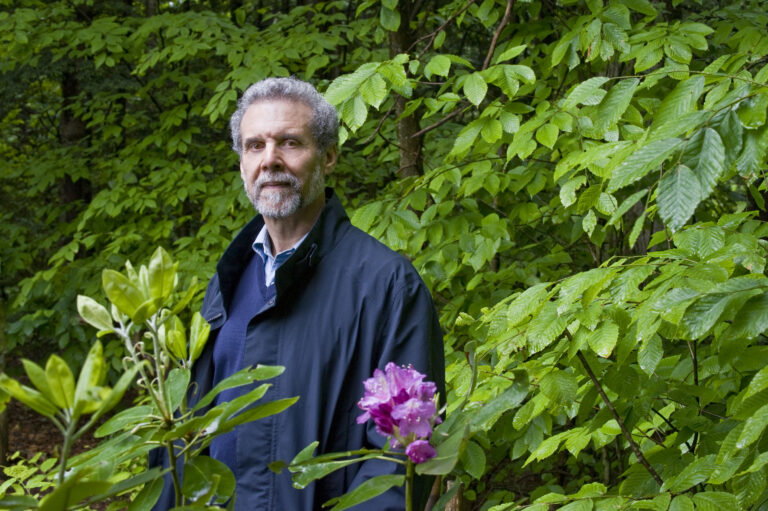About

In My Own Words...
I was born in Stockton, California, on March 7, 1946, the leading tip of the tidal wave of post-war baby boomers (I must have been conceived just around the time of V-E day, the end of World War II in Europe, June 6, 1945). My parents were college professors, my father taught in the humanities—including Latin and a course on world literature—at what became San Joaquin Delta Community College (the library there is named after him); my mother was a social worker who taught in the sociology department of what is now the University of the Pacific.
Perhaps because I was president of my high school, I received a scholarship for leadership from the Alfred P. Sloan Foundation to attend Amherst College, a place I had never seen in faraway New England. In part due to culture shock (and taking advantage of the then-new Amherst Independent Scholar program), I transferred to the University of California at Berkeley for my junior year and part of my senior year, returning to Amherst to graduate. At Berkeley, where I was an anthropology major, I was lucky enough to have several remarkable professors, including a graduate seminar with the brilliant sociologist Erving Goffman on rituals of social interaction. When I returned to Amherst, I wrote my honors paper on mental health in historical, anthropological and social perspectives, graduating magna cum laude—a miracle given my disastrous academic performance there my freshman year.
The Ford Foundation was generous enough to give me a scholarship to Harvard, where I enrolled in the program in clinical psychology in what was then the Department of Social Relations. I was drawn to the idea of studying the human mind from an interdisciplinary perspective; the department included anthropology and sociology together with psychology. My main mentor there was David C. McClelland, best-known for his theory of the drive to achieve. Just at this time McClelland was developing and championing methods for assessing the competencies that distinguished star performers from average—a body of research I was to return to later in my career.
With McClelland’s help and a Harvard predoctoral traveling fellowship, I was able to study in India, where my focus was on the ancient systems of psychology and accompanying meditation practices of Asian religions. I had been a meditator since my junior year in Berkeley, and was intrigued by finding theories of the mind and its development that were still in active use after two thousand years or more (and which had never been mentioned in any psychology course I had taken). When I returned to Harvard, my doctoral research was on meditation as an intervention in stress arousal.
I then received a postdoctoral grant from the Social Science Research Council to return to Asia and continue my studies of these ancient psychologies, spending time both in India and Sri Lanka. I wrote what became my first book, now called The Meditative Mind, summarizing my research on meditation.
I returned to Harvard as a visiting lecturer, teaching a course on the psychology of consciousness—a topic of intense interest back then in the 1970s. Because it was so heavily enrolled, the class was moved from a small room to one of the largest lecture halls on campus.
Then, on McClelland’s recommendation, I was offered a job at Psychology Today, then a major magazine, by T. George Harris, the editor. This was an unexpected jog in my career path—I had always thought I would be a college professor like my parents. But writing appealed to me, and at the magazine I went through a tutorial in journalism that was to set the course of the rest of my career.
Recruited by the New York Times to cover psychology and related fields, in 1984 I began a twelve-year sojourn. I learned much about science journalism from my editors and colleagues, a talented crew on the science desk, and the Times offered remarkable access and visibility. But I found that my urge to write about ideas with impact sent me in directions that did not always fit what the Times saw as news. This was especially so with the rich trove of research on emotions and the brain, which I had covered in small bits and pieces over the years for the times. I felt the topic deserved to be a book, and so Emotional Intelligence came to be. To my surprise, the book ended up being hugely successful. I got so many requests to lecture that I had less and less time for writing in the Times. I finally left the paper to devote my efforts to the message of the book.
Foremost among these was the idea that schools should teach emotional literacy along with regular academic subjects. While I was writing Emotional Intelligence, I pursued this idea with a group including Eileen Growald and Tim Shriver. In 1993 we co-founded the Collaborative for Academic, Social, and Emotional Learning, headed by Roger Weissberg, which began at the Yale Child Studies Center, and then moved to the University of Illinois at Chicago with Roger. The Collaborative has catalyzed the SEL movement, so that programs in these life skills are now commonplace in thousands of schools around the world. Just as important, careful research evaluations are showing that SEL not only improves children’s social and emotional abilities, but also lowers risks like violence, substance abuse, and unwanted teen pregnancies, while making kids better behaved and more positive about learning. Most impressively, academic achievement scores improve by an average 12 to 15%.
To my surprise, there was also great interest in emotional intelligence among the business community. This prompted me to write Working With Emotional Intelligence (published in 1998), and I went back to the research tradition spawned by David McClelland, which by then had become commonplace in most large organizations. This allowed me to survey studies of the competencies that distinguished outstanding performers done independently in a large range of organizations, from PepsiCo to the U.S. Federal Government. This work in turn led to my writing an article in the Harvard Business Review called “What Makes a Leader?” The article became the Review’s most-requested reprint to that point, a gauge of the enthusiasm for the concept among those in the organizational world.
My immersion in research on work performance led me to realize that all too often the quality of data on which business people based decisions left much to be desired. At about this time I co-founded the Consortium for Research on Emotional Intelligence in Organizations, which I direct with Cary Cherniss of the Graduate Program in Applied and Professional Psychology at Rutgers. The Consortium, has a parallel mission to the SEL collaborative, catalyzing research on the contribution of emotional intelligence abilities to workplace effectiveness.
I found the role of emotional intelligence in leadership particularly compelling. With Richard Boyatzis—who had been a fellow graduate student with McClelland, and now teaches in the business school at Case Western—and his former student Annie McKee, who heads the consulting firm Teleos Institute, I wrote Primal Leadership: Learning to Lead with Emotional Intelligence.
Since my long sojourn in Asia as a grad student, I have been an on-and-off meditator. Through my friends Adam Angle and Francisco Varela, who had founded the Mind and Life Institute to foster dialogues between the Dalai Lama and scientists, in 1990 I organized a round on the topic of health and emotions, which became the edited book Healthy Emotions. A decade later, I organized a second dialogue on the question of what makes an emotion destructive, which I narrated in the book Destructive Emotions.
I’m continuing to write in the home where my wife Tara Bennett-Goleman and I live in New York. My two sons from an earlier marriage both are nearby, as are my grand-children.
While a bio like this focuses on one’s public life, I find that over the years my private life has grown increasingly important to me, particularly as the years allow me to spend less time running around and more time just being. I find more and more that what satisfies me has little to do with how well one or another book does—though the good works I participate in continue to matter much.
My wife and I offer workshops together, and we try to spend a good deal of our free time in meditation retreats or traveling together to places we enjoy that nourish this side of our lives. Life’s simple pleasures—a walk on a beach, playing with grand-children, a good conversation with a friend—have more appeal to me than professional honors or ambitions.

“Vitality arises from sheer human contact, especially from loving connections. This makes the people we care about most an elixir of sorts, an ever-renewing source of energy. The neural exchange between a grandparent and a toddler, between lovers or a satisfied couple, or among good friends, has palpable virtues… the practical lesson for us all comes down to, "Nourish your social connections.”
